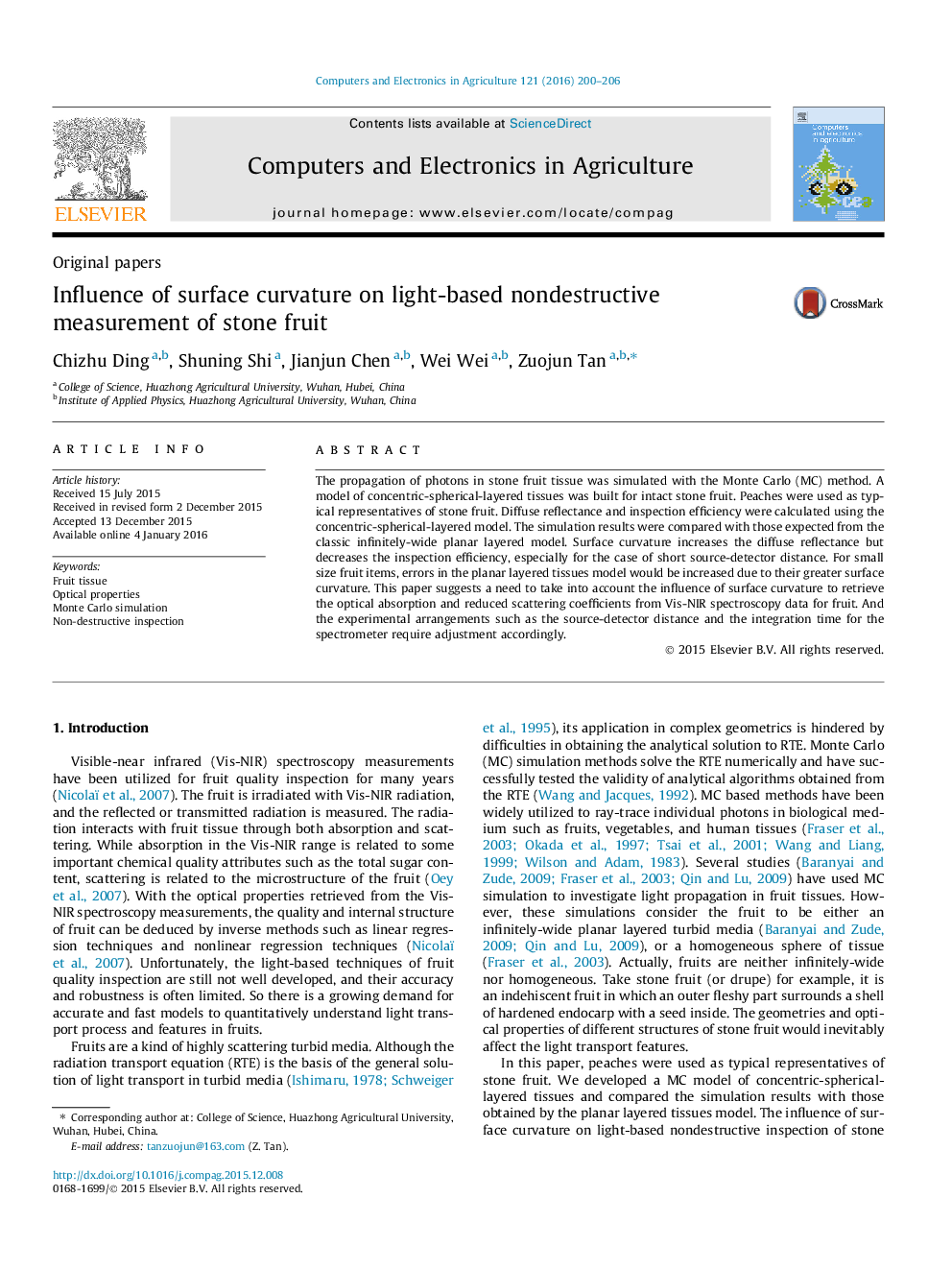| کد مقاله | کد نشریه | سال انتشار | مقاله انگلیسی | نسخه تمام متن |
|---|---|---|---|---|
| 84001 | 158857 | 2016 | 7 صفحه PDF | دانلود رایگان |
• Intact stone fruit were modeled as concentric-spherical-layered tissues.
• Light propagation in fruit was simulated using Monte Carlo methods.
• Surface curvature affects the diffuse reflectance and the inspection efficiency.
• The experimental arrangements require adjustment accordingly.
The propagation of photons in stone fruit tissue was simulated with the Monte Carlo (MC) method. A model of concentric-spherical-layered tissues was built for intact stone fruit. Peaches were used as typical representatives of stone fruit. Diffuse reflectance and inspection efficiency were calculated using the concentric-spherical-layered model. The simulation results were compared with those expected from the classic infinitely-wide planar layered model. Surface curvature increases the diffuse reflectance but decreases the inspection efficiency, especially for the case of short source-detector distance. For small size fruit items, errors in the planar layered tissues model would be increased due to their greater surface curvature. This paper suggests a need to take into account the influence of surface curvature to retrieve the optical absorption and reduced scattering coefficients from Vis-NIR spectroscopy data for fruit. And the experimental arrangements such as the source-detector distance and the integration time for the spectrometer require adjustment accordingly.
Figure optionsDownload as PowerPoint slide
Journal: Computers and Electronics in Agriculture - Volume 121, February 2016, Pages 200–206
